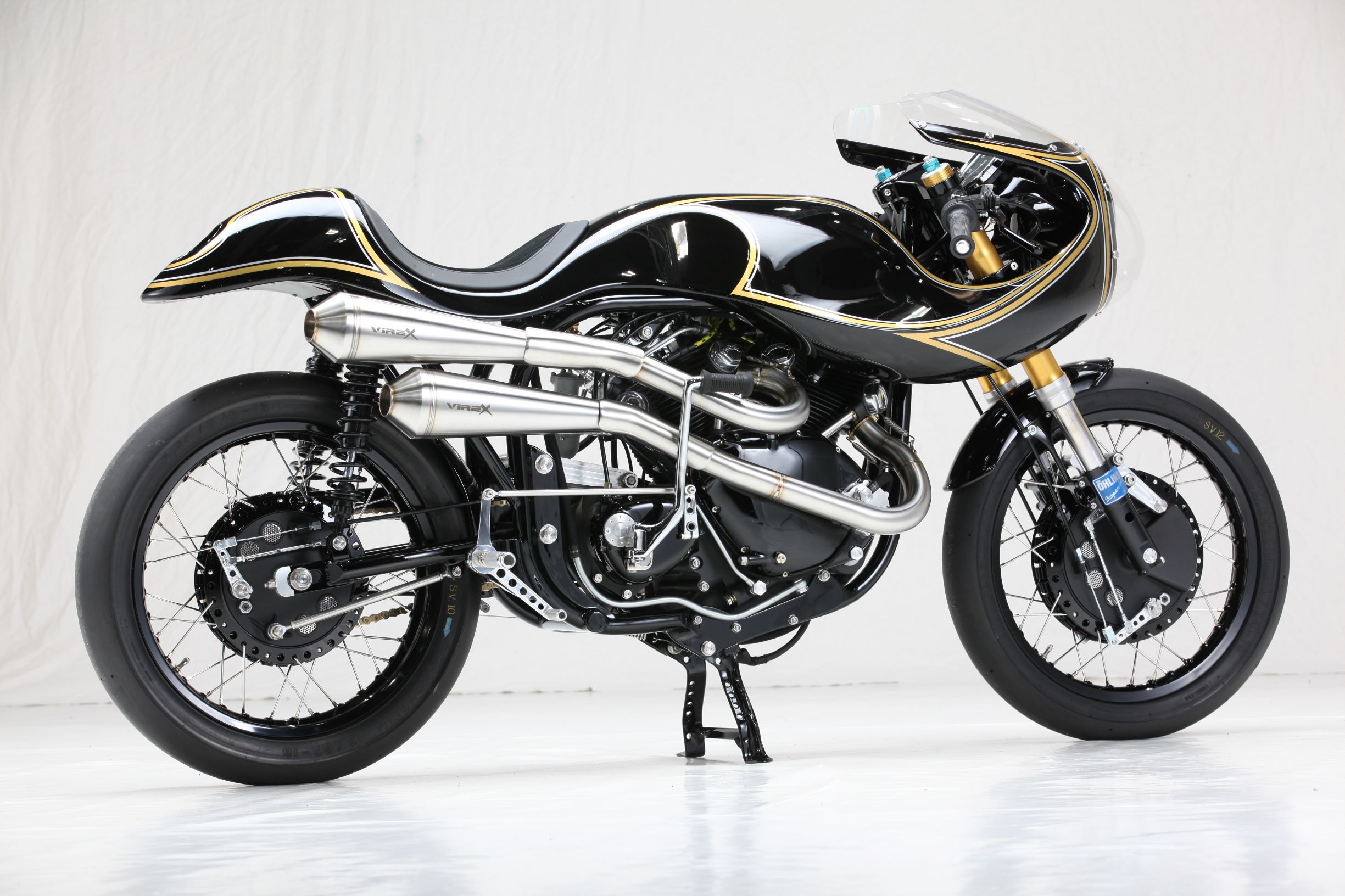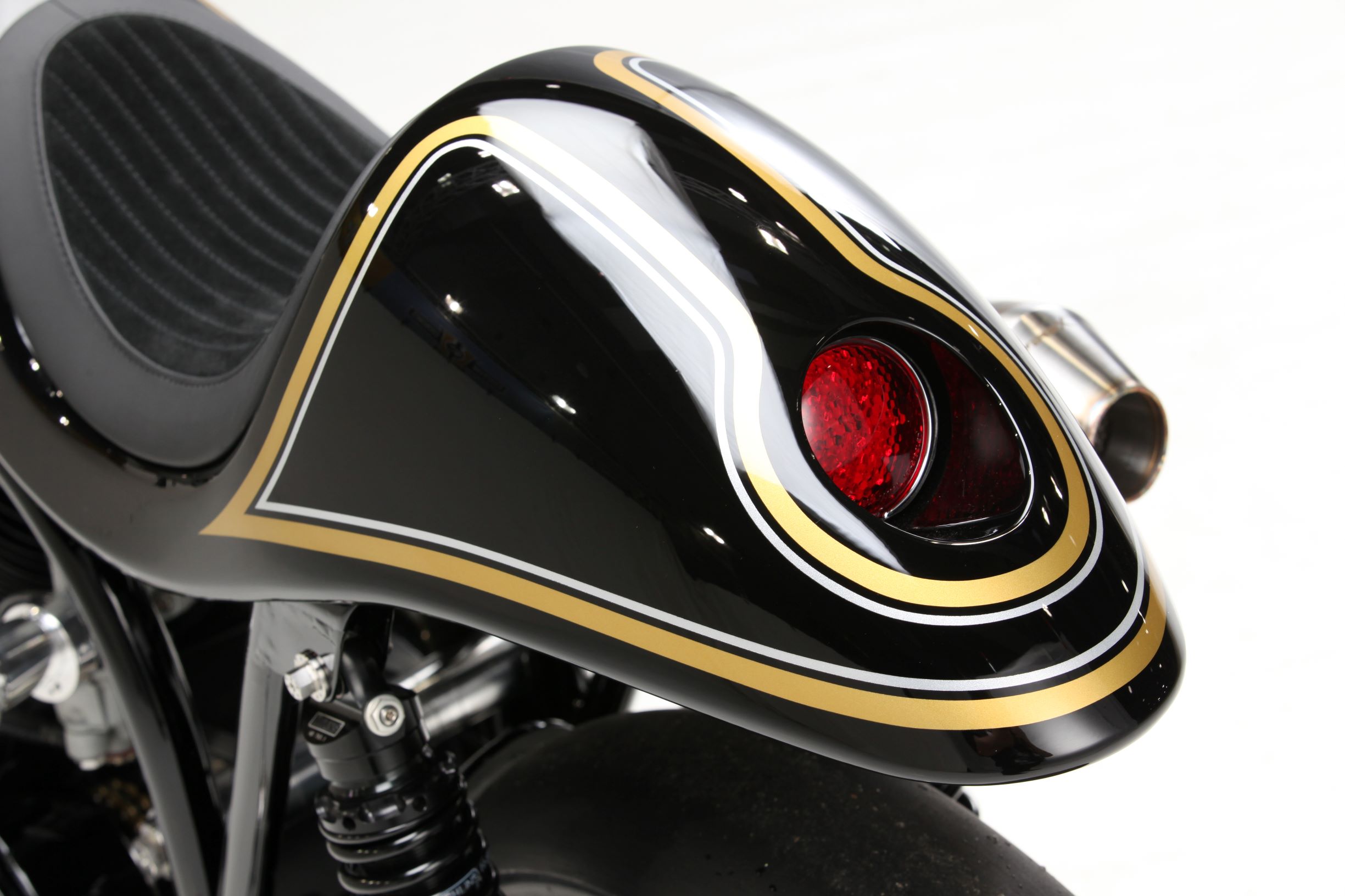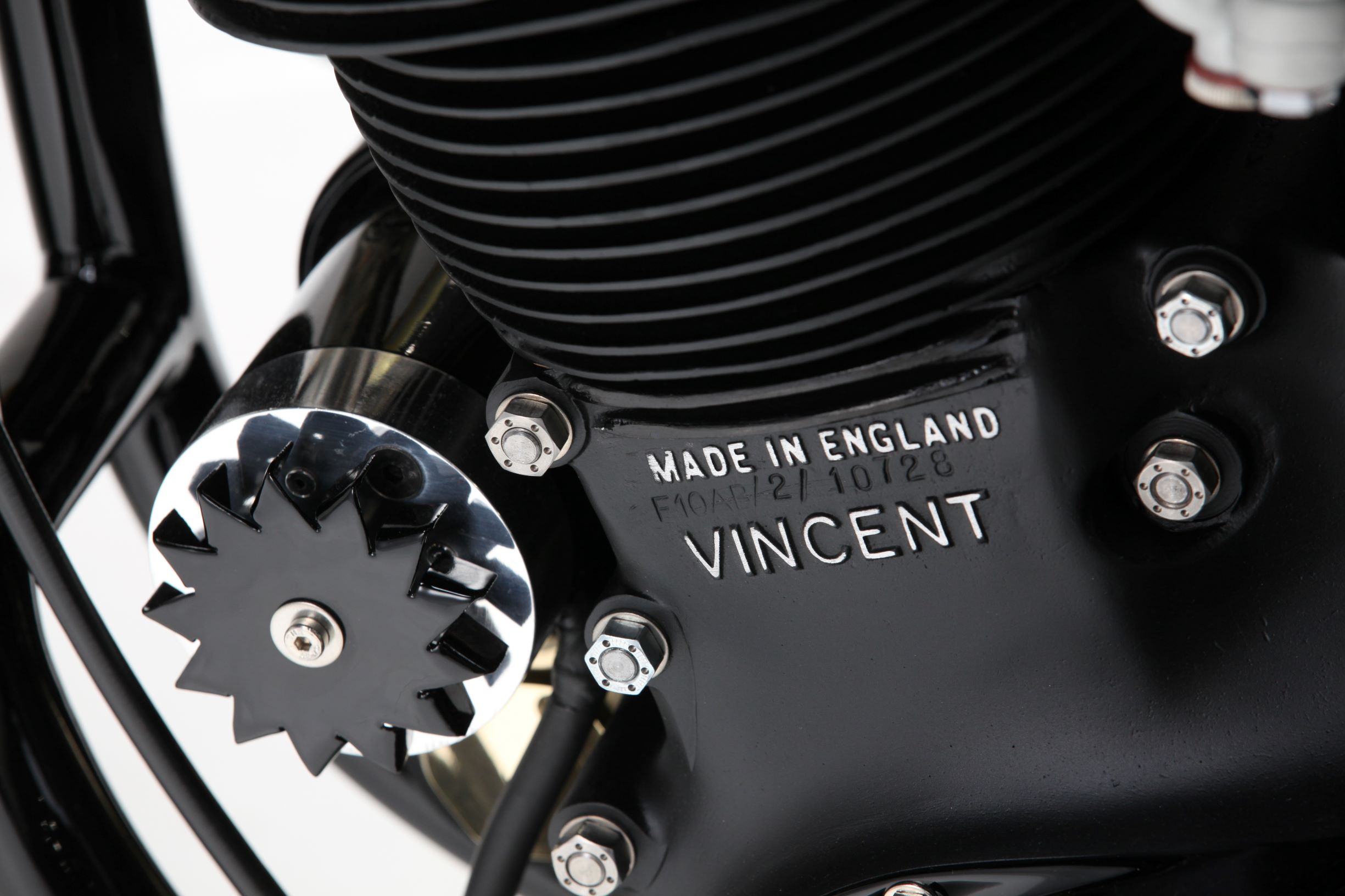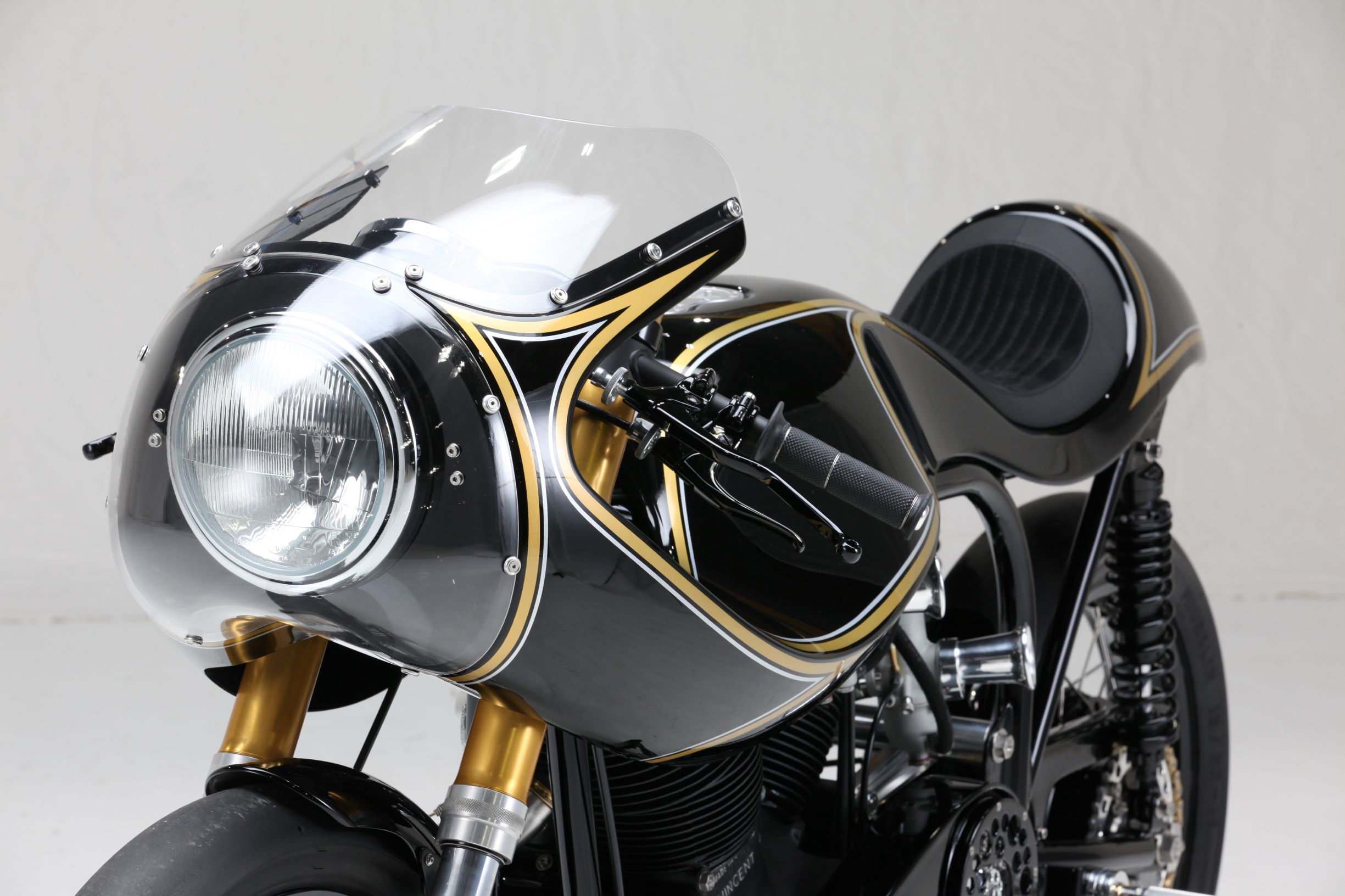The Stile Italiano Norvin Motorcycle Is a Throwback to Old-School Cafe Racers
A Vincent engine, Norton frame, Ducati suspension and rare Japanese drum brakes push this killer custom bike over the top.

One hundred mph. More. More. Flat out. Rockabilly hair slicked back. Lewis leathers. Emblems ablaze. Twitching for another Woodbine to smoke upon a successful return. Well on the way to joining the exclusive Ton Up Club.
This is the origin of the café racer. So named for London’s Ace Café, and the speed freaks who raced to the nearby Hanger Lane roundabout and back to earn their place in the Ton Up Club after World War II. Legend has it that if your bike couldn’t do 100 mph, you had no chance of making the distance required in the time it took for a record to play on the jukebox. The fancy marques of the day were BSA, Triumph and Norton, and if you were really lucky, and wealthy, Vincent.

In the quest for the best combination of speed and handling, kids got creative. Some got very creative. So with greasy nicotine-stained hands they stripped and dipped, adapted, melded, cross-contaminated and adjusted. Out of this primordial parts soup came the hybrids. The chimeras of the café racer world. Take a Triumph engine, put it into a Norton frame, and hey presto, with some hand-beaten aluminum bodywork you have a legendary “Triton.” And your Triton would handle better than a Triumph, and go faster than a Norton. Ton Up Club entry: approved.
In 1940 Brough stopped making motorcycles. Leaving Vincent, whose motorcycles could cost the equivalent of a decent house at the time, chasing the crown of the Rolls-Royce of the motorcycle world. Vincent was Philip Conrad Vincent’s baby. He bought HRD Motorcycles in 1928 for 450 pounds sterling. And then moved the machinery to Stevenage in Kent, England, eventually changing the name to Vincent. Howard Raymond Davies, the founder of HRD, had made bikes that won races. But Phil Vincent would go on to make bikes that became legends.

At a time when the average bike struggled to get anywhere near 100 mph, the Vincent Black Shadow was shattering land speed records, its iconic five-inch chronometric speedometer registering 150 mph across the Bonneville Salt Flats. An insane speed for a time of cross-ply tires, drum brakes, and dodgy electrics. It was 1948, and Rollie Free was the pilot. Kitted out in a swim cap and trunks, and a pair of sneakers, the iconic image of him lying prone on the Vincent Black Shadow as he blasts along is perhaps one of the best-recognized photos in motorcycling history. “The World’s Fastest Standard Motorcycle. This is a Fact Not a Slogan,” said Vincent’s advertising in the 1950s.
Vincents were expensive as hell, fast as hell, and iconic even in their own time. Which made it tough to tear them apart to make a hybrid café racer. But they did suffer from the concern of having a better engine than the chassis it was paired with. So a few brave souls did build Norvins. Taking the fantastic Vincent engine and mating it to the Norton featherbed-style frame. As time went by and the surviving examples became more and more sought after, the case to convert became tougher and tougher. Hardly surprising when special models like the Vincent Black Lightning (essentially a lightened racing version of the Black Shadow) were changing hands at auction for nearly $1 million by 2018.

Nonetheless it does still happen. As is the case with this Rubenesque beauty: the Stile Italia Norvin recently built by a small specialist shop in northern Italy. Its heart is an over-bored 998cc V-twin from a c. 1950s Vincent Rapide. In stock form the engine already featured aluminum pistons, forged connecting rods, a unique rocker arm design, twin Amal carburetors and a dry-sump oiling system making it good for somewhere around 50 hp. But for extra oomph, Stile Italia increased the engine capacity to 1140cc and used new forged pistons, twin spark heads, and a hand-fabricated exhaust with Virex silencers.
Newly refreshed, it was then bolted into a Norton featherbed frame, using the engine as a stressed component as originally envisaged in the Vincent design. Ohlins suspension components from the legendary Ducati 888 superbike and bespoke wire wheels ensure the rubber sticks to the road. And ultra-rare Japanese racing drum brakes make sure you can pull up in style at the lights. We have no idea how fast it goes. But given half a chance we’ll grab our swimming trunks, cap and sneakers and take it for a whirl to find out.
